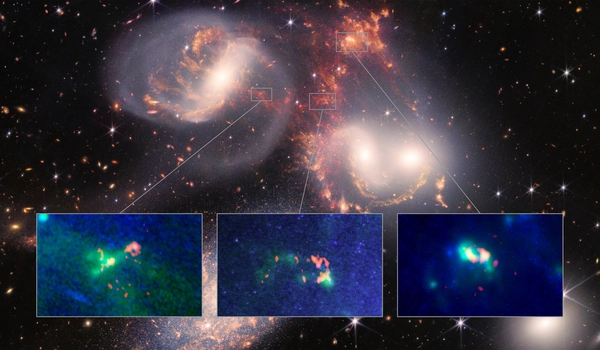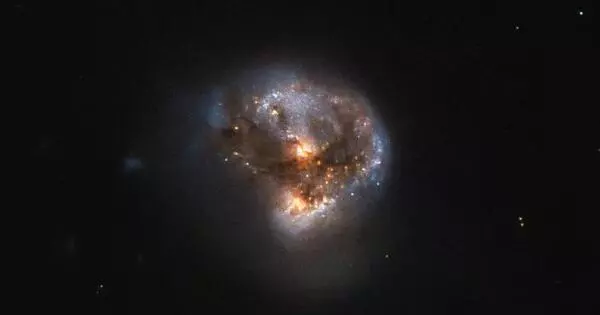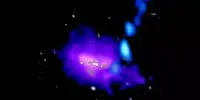Hydrogen masers are a type of maser (microwave amplification by stimulated emission of radiation) that amplify the microwave radiation emitted by hydrogen atoms. In the context of massive stars, hydrogen masers can be used to study their internal structure and dynamics, as well as to measure their distances from Earth.
The use of hydrogen masers has revealed new information about the behavior of massive stars, including their rotation and magnetic fields, which play important roles in their evolution. By providing precise measurements of these properties, hydrogen masers are helping astronomers better understand the physics of massive stars and their impact on the universe.
Scientists discovered a previously unseen jet of material launching from the star’s gas disk at impossibly high speeds while studying the masers around oddball star MWC 349A with the Atacama Large Millimeter/submillimeter Array (ALMA). Furthermore, they believe the jet is caused by the star’s strong magnetic forces. The discovery could help scientists better understand the nature and evolution of massive stars, as well as how hydrogen masers form in space. The new findings are announced at a press conference at the American Astronomical Society’s (AAS) 241st meeting in Seattle, Washington.
A maser is like a naturally occurring laser. It’s an area in outer space that emits a really bright kind of light. We can see this light and trace it back to where it came from, bringing us one step closer to figuring out what’s really going on.
Sirina Prasad
MWC 349A, located approximately 3,900 light-years from Earth in the constellation Cygnus, is a hotspot for scientific research in optical, infrared, and radio wavelengths. The massive star, which is roughly 30 times the mass of the Sun, is one of the brightest radio sources in the sky and one of only a few objects known to contain hydrogen masers. These masers amplify microwave radio emissions, allowing researchers to study processes that would otherwise be too small to see. This one-of-a-kind feature enabled scientists to map MWC 349A’s disk in great detail for the first time.
“A maser is like a naturally occurring laser,” said Sirina Prasad, an undergraduate research assistant at the Center for Astrophysics | Harvard & Smithsonian (CfA), and the primary author of the paper. “It’s an area in outer space that emits a really bright kind of light. We can see this light and trace it back to where it came from, bringing us one step closer to figuring out what’s really going on.”

The team was able to use the masers to uncover previously unseen structures in the star’s immediate environment by leveraging the resolving power of ALMA’s Band 6, developed by the US National Science Foundation’s National Radio Astronomy Observatory (NRAO). Qizhou Zhang, the project’s principal investigator and senior astrophysicist at CfA, added, “We used hydrogen masers to probe the physical and dynamic structures in the gas surrounding MWC 349A and discovered a flattened gas disk with a diameter of 50 au, roughly the size of the Solar System, confirming the star’s near-horizontal disk structure. We also discovered a fast-moving jet component in the winds blowing away from the star.”
At a blistering 500 km per second, the observed jet is ejecting material away from the star. That’s the equivalent of traveling from San Diego, California to Phoenix, Arizona in the blink of an eye. According to researchers, a jet moving at this speed is most likely propelled by a magnetic force. In the case of MWC 349A, that force could be a magnetohydrodynamic wind, which moves as a result of the interaction between the star’s magnetic field and the gases in its surrounding disk.
“Our previous understanding of MWC 349A was that it was surrounded by a rotating disk and photo-evaporating wind. This system had yet to show strong evidence for an additional collimated jet. Although we don’t know where it comes from or how it is created, it’s possible that the jet is produced by a magnetohydrodynamic wind, in which case the magnetic field is responsible for launching rotating material from the system “Prasad explained. “This could help us better understand the disk-wind dynamics of MWC 349A, as well as the interactions between circumstellar disks, winds, and jets in other star systems.”
















